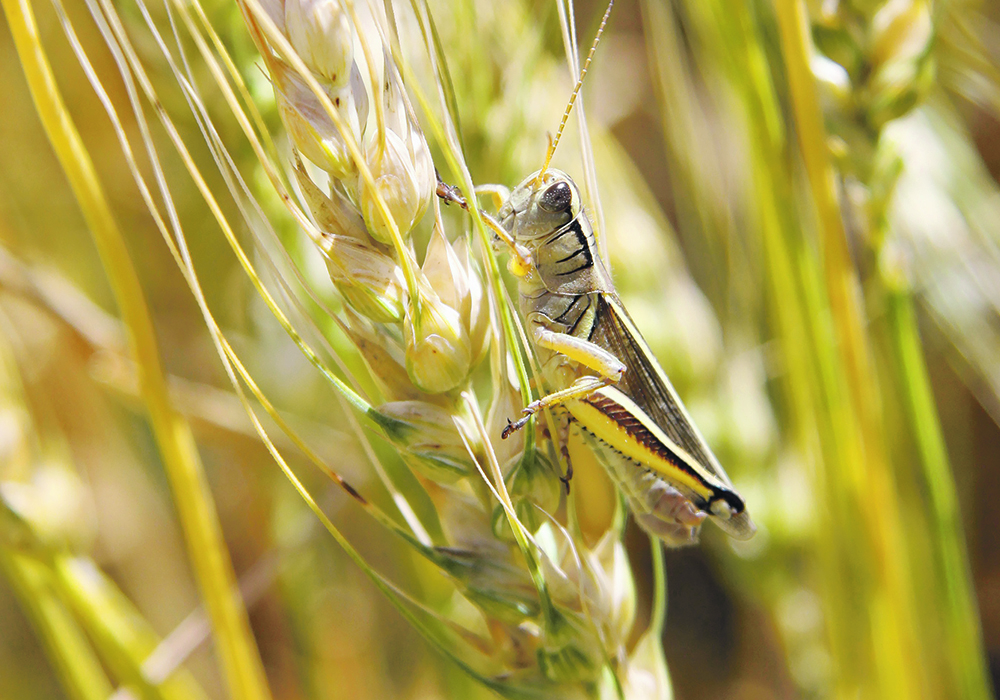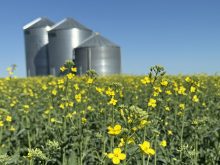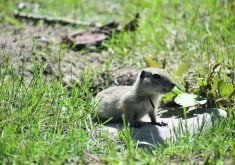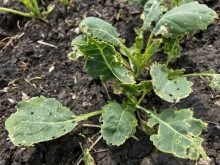Latest forecast indicates migratory grasshoppers likely to emerge in a large cluster this spring rather than more gradually
MEDICINE HAT — The number of crop-damaging grasshoppers has been rising in southern and eastern Alberta since 2021 and conditions favour the trend to continue, according to the latest forecast.
The warm, dry fall and early winter may have created a situation in which most southern Alberta grasshoppers have entered diapause, a type of hibernation specific to insects, according to University of Lethbridge professor Dan Johnson. Usually, the condition is more sporadic.
“(In late 2023) it kept warming up off and on and what I think is those embryos have been evened up,” said Johnson.
Read Also

Agritechnica Day 2: The future of tractor power, building quicker crop apps and large farms and tech
Agritechnica Day 2: The future of tractor power, building quicker crop apps with Syngenta and large farms and tech
Grasshoppers that entered diapause early have slowed their development due to warm and dry conditions, bringing them nearer the development stage of the ones that entered diapause later.
That will likely lead to a situation in which migratory grasshoppers will emerge in a large cluster this spring rather than more gradually, explained Johnson.
“Those eggs have caught up together in a tight packed age structure so that means if the spring is really warm and convenient weather for them — not rainy — they could come out together. Instead of a month of slow hatching and confusion, they might come out in a rush.”
That could be good and bad. A rush in spring could allow more effective control measures, but swift emergence without quick action could damage crops in early development.
“Some years they come out in a sharp flush and that’s what this year is probably going to present to us,” said Johnson, noting the outlook can change with environmental conditions.
The species of grasshoppers can also vary with weather conditions, he added.
“That happened in the ‘90s when we had this one year where it rained all spring and the normal grasshopper pests all died out, but one called the big-headed just flourished all over the place.
“The lucky thing about that was the big-headed is not really a crop pest,” said Johnson.
Grasshopper populations in 2023 were far from historical highs, ranking somewhere in the middle.
Johnson said continuation of severe drought conditions won’t make matters worse for grasshopper populations and could even reduce their numbers.
“It can actually be too dry for grasshopper eggs. They do need a little bit of moisture in their embryonic development in the late summer and the fall.
“The only time drought is going to matter to them is in the spring. All this drought we’re having now isn’t really making the grasshopper problem worse, it’s just making farming worse.”
Areas along Saskatchewan’s southern and south-central border with Alberta bore some of the greatest grasshopper impact in 2023.
Those areas are expected to be hot spots again in 2024, according to the provincial forecast.
















